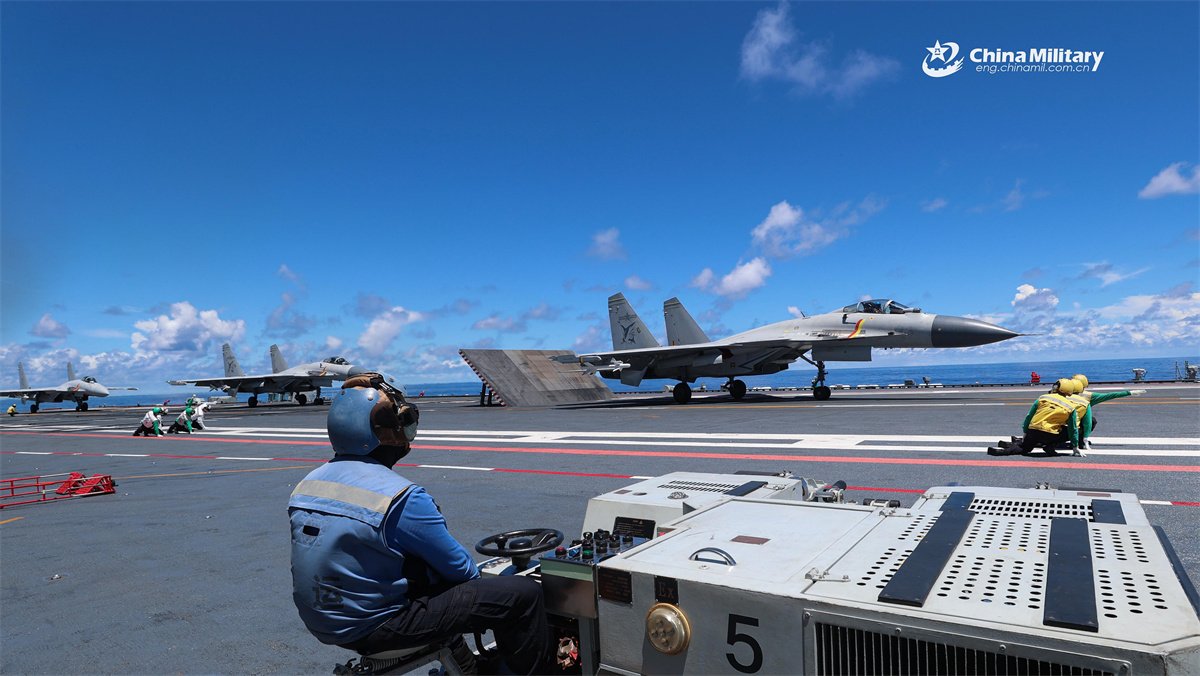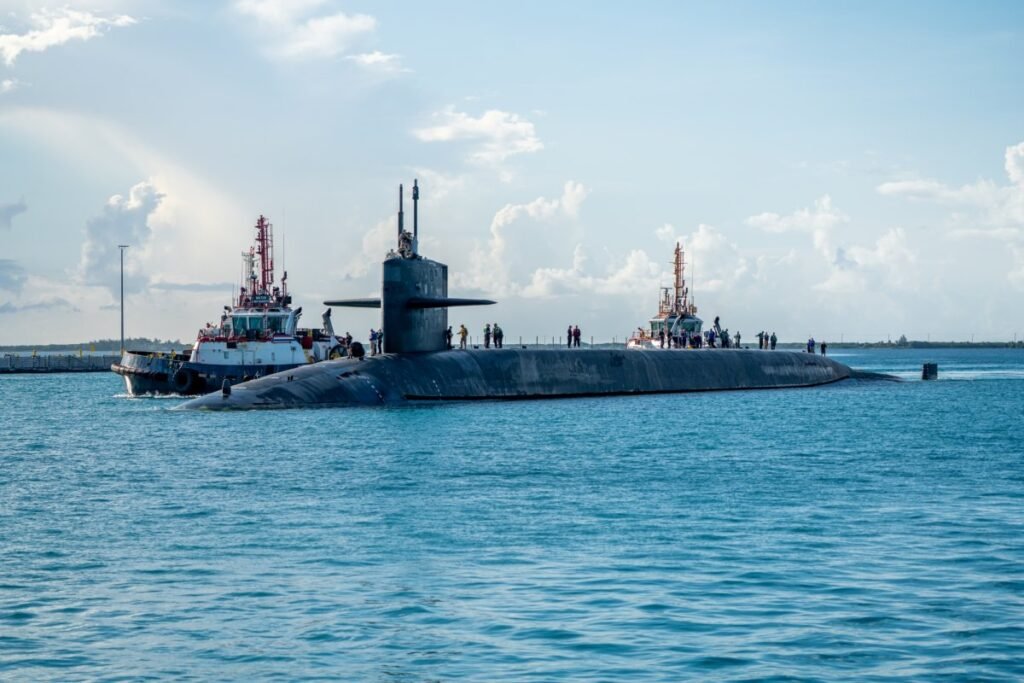The Chinese navy said on Monday that its two aircraft carriers repeatedly encountered foreign warships and aircraft while operating simultaneously in the broader western Pacific.
Both CNS Liaoning and CNS Shandong maintained “high vigilance and responsiveness” to combat scenarios, handling the situation “professionally and soundly,” China‘s navy said.
Newsweek has contacted the Chinese Defense Ministry for further comment by email.
Why It Matters
The Liaoning and the Shandong were deployed for about two weeks in June on the eastern side of a U.S. defensive line known as the first island chain—comprising Japan, Taiwan and the Philippines in the western Pacific.
Japan, a U.S. treaty ally, closely monitored the dual Chinese aircraft carrier deployment—the second such operation since October in the South China Sea—during which one of its patrol aircraft was intercepted by missile-armed fighter jets launched from the Shandong.
What To Know
Both the Liaoning and the Shandong have completed “far-sea combat-oriented training” and returned to their respective home ports of Qingdao and Sanya, according to China’s navy.
Regarding the “coordinated and systematic” training, both Chinese aircraft carriers conducted a series of drills—including reconnaissance and early warning, counterstrikes, maritime assaults, air defense and aircraft flight operations—under “combat conditions.”
Official footage shows fighter jets conducting takeoffs and landings aboard the Liaoning and the Shandong, both day and night, while the aircraft carriers receive supplies.

A Chinese fighter jet taking off from the aircraft carrier CNS Liaoning while underway in the western Pacific on June 30, according to the Chinese navy.
Chinese military
Without naming specific countries, the Chinese navy accused foreign warships and aircraft of conducting “up-close reconnaissance maneuvers, tracking, and surveillance” against its aircraft carrier groups, prompting the deployment of carrier-based aircraft.
It remains unclear whether any country besides Japan has surveilled the Chinese naval groups. The U.S. Navy dispatched a destroyer to monitor the Liaoning at close range in April 2021. An official photo showed U.S. naval officers “casually” observing the Chinese aircraft carrier.
The dual aircraft carrier training enhanced the Chinese military‘s ability to safeguard the East Asian power’s sovereignty, security and development interests, according to the Chinese navy, which added that the drills were part of a “routine arrangement” under its annual plan.
Meanwhile, China’s Defense Ministry announced that the Shandong and three other warships were scheduled to make a port call in Hong Kong—a special administrative region of China—on Thursday for a five-day visit to promote the country’s military development.

An aircraft handling officer giving a launch signal to a Chinese fighter jet aboard the aircraft carrier CNS Shandong while underway in the western Pacific on June 30, according to the Chinese navy.
Chinese military
What People Are Saying
The Chinese navy said in a post on X, formerly Twitter, on Monday: “During the mission, the two [aircraft carrier] groups, in coordination with relevant arms of the service, conducted joint drills on maritime strikes, air and missile defense, anti-submarine warfare, and integrated long-range support, and thus significantly enhanced real combat capabilities.”
Alex Luck, a naval analyst in Australia, wrote on X on Monday: “‘Far sea’ in [People’s Liberation Army]/Chinese terminology usually refers to blue water operations. As opposed to ‘near seas,’ traditionally associated with coastal aka green water ops.”
What Happens Next
It remains to be seen whether the Chinese navy—which possesses the world’s largest fleet of warships by hull count—will conduct dual aircraft carrier operations regularly in the future.








![[News] China Rare Earth Group Reportedly Hit by Executive Resignations Amid U.S.-China Trade Tensions](https://koala-by.com/wp-content/uploads/2025/07/Rare-Earth-China-GRINM-Advanced-Materials-20250609-624x404.png)